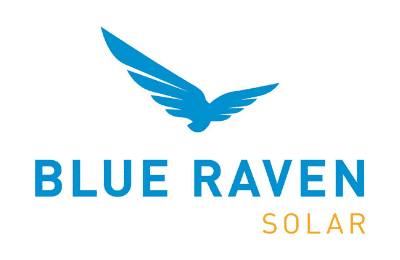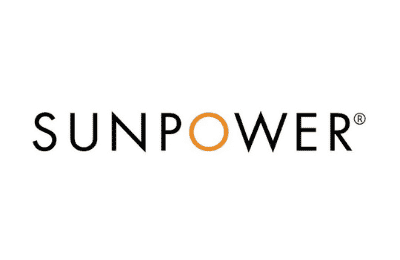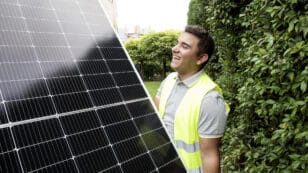
Is Solar Worth It in New Mexico? (2024 Homeowner's Guide)
In this EcoWatch guide on whether going solar is worth it in New Mexico, you’ll learn:
- How New Mexicans can evaluate whether they should go solar
- What New Mexicans should look out for when going solar
- What the benefits of going solar in New Mexico are
This guide has given thousands of New Mexico homeowners peace of mind by helping them find the best option to reduce energy costs for their own homes. Let’s get started!
Each product and or company featured here has been independently selected by the writer. You can learn more about our review methodology here. If you make a purchase using the links included, we may earn commission.
New Mexico ranks 19th in the country for solar conversions and solar-friendliness, but residents pay below the national average for electricity and use much less energy per month than most US homeowners. As such, many residents wonder if converting to solar energy is a worthwhile investment. For most homeowners it is, but it’s important to do a value analysis for your home before committing to this clean energy source.
Below, you’ll find some information on all of the criteria you can use to assess your solar viability. We’ll also discuss the benefits of converting to solar and some things you should consider before making the switch.
To speak with an EcoWatch-vetted professional who can help you determine whether solar is worth it for your New Mexico home, follow the links below.

NM Solar Group

Local Service
Average cost
Pros
- Offers products from leading manufacturers
- Outstanding customer service
- Makes charitable contributions
- Competitive pricing
Cons
- Slightly limited service offerings
- Relatively young company

Blue Raven Solar
Pros
- Industry-leading in-house financing
- Competitive pricing
- Excellent reputation
Cons
- Doesn't offer solar batteries (coming 2022)

OE Solar
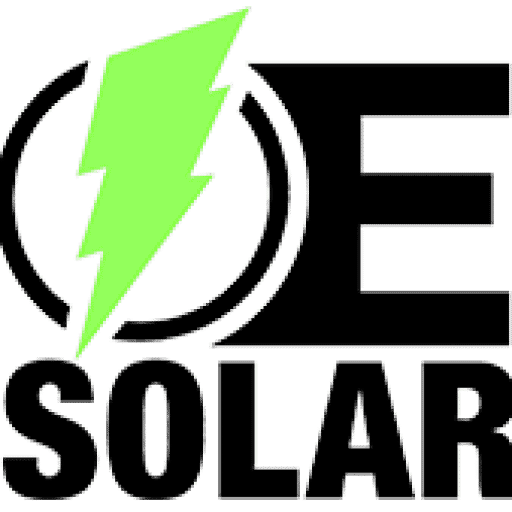
Regional Service
Average cost
Pros
- Many years of experience
- Comprehensive service offerings
- Outstanding customer service
Cons
- No leases or PPAs
- Limited brands of solar equipment available
Watch Below: Learn How You Can Profit Off Of the Extra Energy Your Solar Panels Produce
How to Figure Out if Solar Panels are Worth It in New Mexico
Solar panels are a wonderful investment for most New Mexicans, but they aren’t a good financial decision for everyone. You can use the factors below to help figure out whether solar will save you money in the long run.
What’s Your Home Electricity Consumption?
Solar panels provide savings on your electric bills, so homes that have above-average consumption naturally stand to save more. Conversely, homes with low energy needs will find less value in their panels. A common benchmark for solar viability is at least 500 kWh of energy consumption per month.
If you use less than this, solar might not be right for your home. The average household in New Mexico uses 670 kWh every month. This is well below the national average, but it puts most residents above the threshold for solar panels being worthwhile. You can check your average monthly energy consumption on your past electric bills.
Read Also: Solar farm proposed south of city could power 23,300 homes in New Mexico
How Much Is It To Go Solar in New Mexico?
The price of solar panels in New Mexico hovers around $3.45 per watt installed, which is just above the national average of $3.33. The system size needed in New Mexico is much lower than average at just 7 kW, so the average homeowner will pay around $16,905 in total for solar after the federal tax credit is taken into account.
Solar panels will bring more savings in areas where electricity rates are high or where residents consume more energy than average. Neither is true in New Mexico, which means solar is a bit less valuable here than in most states. Still, many New Mexicans find significant savings by converting to this renewable energy source.
What’s the Payback Period for Solar in New Mexico?
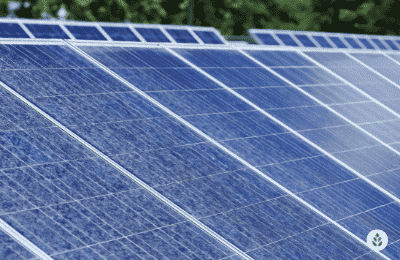
The average payback period in New Mexico is around 13 years, which is right in line with the national average. Most homeowners in the Land of Enchantment find that their panels pay for themselves in between 9 and 15 years.
You can have a solar installer estimate your payback period for you, or you can use a slightly less accurate solar calculator to estimate it yourself. If your payback period is longer than 15 years, your total savings will be lower than average, and it will take you longer than most homeowners to recuperate your investment. However, any timeline under 25 years is still expected to provide a return over time.
What Are Average Buy-Back Rates in New Mexico?
Most states have a mandated net metering policy, which allows solar customers to overproduce energy with their panels and sell back the excess to their utility companies. This option helps residents offset and even eliminate their electric bills, ultimately reducing the payback period and increasing the total return on investment (ROI). New Mexico requires all electric companies subject to the Public Regulation Commission to provide net metering to their customers.
The credit rate for excess energy is not regulated, so it’s often lower than the retail rate. This is beneficial but less than ideal, so many homeowners in New Mexico opt to add on a solar battery to help maximize their savings over time. Some companies do go above and beyond to provide great net metering policies. PNM Resources and El Paso Electric, for example, offer retail buy back rates.
How Much Sun Does Your Roof Receive?
Solar panels convert sunlight into electricity, so they are most efficient and most valuable in areas that receive a lot of sun. The national average number of sunny days is around 205, while New Mexico experiences around 293 days of sunshine annually. This makes New Mexico far better than most states in the country for solar conversion and one of the best in the nation.
However, it’s not enough to take the average amount of sunlight in an area because there are some individual factors you need to consider as well. First, the direction your roof faces plays a role, as south-facing roofs in the US receive the most direct sunlight and are the best for solar panels. You will also need to assess your roof for shading from trees or buildings, as anything blocking the available sunlight will make your panels less efficient and less valuable overall.
What’s the Outlook on Solar in New Mexico?
Renewable energy, in general, is very well received and supported in New Mexico. The State of New Mexico set Renewable Portfolio Standard (RPS) goals to produce 50% of its power from renewable energy sources by 2030 and 100% for investor-owned utilities by 2045.3 These are lofty goals, which, along with the state solar incentives, make solar wildly popular in the area.
Among the clean energy sources that are most prevalent, solar ranks second behind wind power. The number of solar installations has increased year over year in New Mexico for the past decade, and it’s likely that the market for solar energy systems will continue to grow in the future. With that being said, there’s no guarantee that solar will overtake wind power in popularity.
Read Also: New Mexico’s community solar program has taken effect. Here’s what you should know
Benefits of Solar Energy in New Mexico
There are many benefits you’ll enjoy when you convert your home to solar power in New Mexico, all of which make going solar more appealing. We’ll discuss the most appealing upsides of installing solar panels below.
Electricity Bill Savings
Most prospective solar customers know that the primary benefit — and the primary reason solar panels are usually a good investment — of going solar is the savings you’ll enjoy on your electric bills. The average New Mexico resident pays around $98.56 per month for energy, which means eliminating your electric bill — which is possible in New Mexico but might require a solar battery — could yield annual savings of $1,182.
The average New Mexican will pay off their solar panels with these savings in 13 years and then save an additional $19,427 over the lifespan of their equipment. You actually stand to save even more if electricity rates continue to increase as they have in the past, as the above numbers are based on current energy prices.
Lower Taxes & Access to Other Incentives
New Mexico is a fairly solar-friendly state that provides several incentives to homeowners to entice them to convert to solar power. One of the most appealing financial incentives is the federal solar investment tax credit (ITC), which is a tax incentive in the amount of 30% of your total system expense. In New Mexico, this averages around $7,245, and this amount gets credited to your federal income tax liability for the year your system is installed. There are some other New Mexico solar incentives are listed below:
- Solar Market Development Tax Credit: This is a state tax credit for 10% of your total system expense, or an average of $2,415 in NM. You can take this credit over 5 years if your income tax liability doesn’t cover it the first year.
- Net Metering: Net metering lets solar customers sell excess power generated to their utility companies for a credit to their energy bills. This helps reduce the payback period and increase ROI. New Mexico mandates net metering for any electric company governed by the Public Regulation Commission.
- Gross Receipts Tax Exemption: This is a sales tax exemption that technically applies to solar installers, but the savings on the waived sales taxes are often passed onto the solar customer.
- Property Tax Exemption for Residential Solar Systems: This is a property tax exemption that prevents your property taxes from increasing as a result of installing solar panels.
Home Resale Value Increase
An enormous benefit of going solar that many homeowners forget to consider is the increase in home value solar panels provide. Estimates from research done by Zillow suggest that the typical home in the US will increase in value by around 4.1% when a solar photovoltaic (PV) system is installed.4 In New Mexico, where the average home value is $291,722, most homeowners can expect a jump in property value of around $11,960.5
It’s important to note that your solar panels will not improve the value of your home if you opt for a solar lease or power purchase agreement (PPA). Your home value will only increase if you choose a solar loan or pay with cash.
Clean, Renewable Energy
While many of the benefits come in the form of financial incentives, there are also some environmental upsides you’ll enjoy when you go solar. Converting to solar panels means you’ll reduce your carbon footprint and your reliance on fossil fuels. You will also contribute less to pollution, and the energy independence you gain will help you avoid electricity rate hikes in the future.
Read Also: New Mexico to get is share of $1 billion in energy savings via federal solar power program
What to Look Out For When Considering Solar in New Mexico
Even once you determine that solar is a good fit for your home, there are some things you will need to think about and some important decisions to make. We’ll discuss these additional considerations below.
Upfront Fees
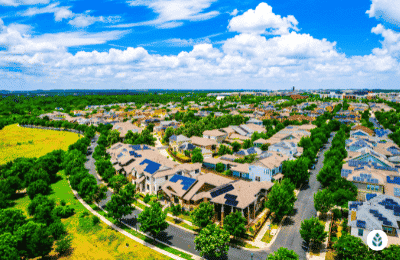
Payback Period
As mentioned above, your estimated solar panel payback period is a crucial metric to keep in mind for determining solar viability, but it can also help determine your long-term savings and your return on investment. Most residents in New Mexico see a payback period of between 9 and 15 years. If yours is longer, your total ROI will be lower than the average of $19,427 in the state. The lower your payback period is, the higher your overall savings will be.
Net Metering Policies in New Mexico
Net metering is a wonderful incentive afforded to most New Mexico residents, and even the worst policy will help save you money and pay off your solar array more quickly. Net metering is a requirement for most utility companies in NM, but the rate at which you get credited for your excess energy will vary among power companies.
You should always check your provider’s policy before signing anything. Many utility companies in New Mexico use an avoided-cost rate, which is less ideal than the retail rate. Some customers opt to pay extra for a solar battery to help offset electric bills if they have a sub-optimal net metering program.
Pending Policies & Changes to Incentives
The solar industry is expanding and improving, which means the policies and incentives available to you can change over time. New solar rebate programs can pop up, existing incentives could change or disappear and policies can be altered. We recommend checking for updates to existing policies and incentives before going solar. It’s worth noting, however, that waiting around for better incentives to come along is generally not a good idea, as you’ll be leaving savings on the table in the meantime.
Weather & Climate in New Mexico
New Mexicans are accustomed to warm, sunny weather and a general lack of extreme weather events, which are just about the ideal conditions for solar panel efficiency and safety. Cloudy days can reduce panel efficiency by up to 90%, but thankfully, the state receives nearly 300 sunny days per year, so inclement weather isn’t typically a concern in the area. Additionally, solar panels work best in areas closer to the equator, where the sunlight is more intense. In terms of geographical location, there are few places better than New Mexico in the country for solar panel installation.
Companies Pushing Solar Leases or PPAs
Your final consideration before pulling the trigger and getting your home solar panel system installed is the solar company you choose. Not all installers are created equal, and some don’t have your best interests at heart. Specifically, it’s wise to steer clear of companies advertising “free panels.” Panels are never really free, and these offers are usually just to get you to sign a solar lease.
Solar leases aren’t typically beneficial, as they don’t bump up your home value, they don’t let you take advantage of the federal solar tax credit and they take much longer to pay off, leading to lower ROIs overall. Unfortunately, solar leases aren’t the worst part of choosing the wrong installer.
There have been reports in areas like Albuquerque of companies claiming to be affiliated with the Public Service Company of New Mexico in an effort to get leases signed or just take money from unwitting homeowners.6 There have been other reports of companies claiming unrealistic savings and overstating tax incentives to get customers to sign contracts.7 It’s important that you only ever work with a vetted and reputable solar installer to avoid any issues.
Wrap Up: Is Solar Worth it in New Mexico?
For most homeowners in New Mexico, solar panels are an outstanding investment that end up paying for themselves and saving a significant amount of money. However, they aren’t suitable for everyone, and you need to determine if your home would benefit from them before committing. Some things to remember to consider include your monthly energy bills, the direction your roof faces, shading on your property, the solar power system expense and more.
We suggest getting in touch with a reputable solar panel installation company to get help figuring out if your home is a good candidate for solar panels.
See also: Calculate how much you can save by going solar
- What Are the Most Reliable New Mexico Solar Panel Companies?
- What Solar Incentives Does the State of New Mexico Offer?
- What Is the Cost of Solar Panels in New Mexico?
The cost information presented in this article is derived from a comprehensive analysis, incorporating data from multiple industry sources. The average cost per watt per state was calculated based on figures from Consumer Affairs, Energy Sage, and Berkeley Lab’s Electricity Markets & Policy Department. Additionally, monthly energy consumption and the average monthly cost of electricity were sourced from the U.S. Energy Information Administration, ensuring a well-rounded and accurate representation of the information presented.
Frequently Asked Questions
At EcoWatch, we get questions all the time from New Mexico homeowners who want to know if solar is a good investment for them. Below are some of the questions we see most often, along with our responses.
If you have specific questions that aren’t answered here, reach out to our team of solar experts at solar@ecowatch.com.
Solar panels usually provide savings to offset your solar system expense in New Mexico within 13 years, and most residents will find that their estimated timeline falls between 9 and 15 years. Your payback period will depend on many factors, including the size and price of your system, the amount of energy you use in an average month, the shading on your property and much more. You can use a solar calculator to estimate your payback period or get a more accurate estimate from a local solar installer.
Most of the time, yes, solar panels will save you money in New Mexico. Going solar lets you offset — if not eliminate — your utility bills, which means they will begin saving you money on your power bills right away. Within 13 years, on average in New Mexico, the savings will offset the price of the system, and the remaining 12+ years of system life are expected to provide you with around $19,427 in additional savings.
Yes! Installing solar panels — as long as you buy them with cash or a solar loan — will make your home more valuable. The most widely accepted estimate for how much more value comes from Zillow, which states that most homes jump in value by around 4.1%. In New Mexico, that means the average homeowner will see added value in the amount of approximately $11,960.
Yes, permits are a requirement to install solar panels in New Mexico. Permits will add a few hundred dollars to your installation expenses in most cases, but the price is usually considered in your initial estimate. Your solar installer will very likely take care of the permitting process for you.
You can install your own solar panels in New Mexico, but it’s not usually a good idea. Even experienced DIYers can make mistakes in the process, and these can lead to roof leaks, equipment damage and severe property damage. We strongly recommend leaving the work to an experienced and insured professional.
Top Solar Installers in New Mexico Cities
Comparing authorized solar partners
-
- Offers products from leading manufacturers
- Outstanding customer service
- Makes charitable contributions
- Competitive pricing
- Slightly limited service offerings
- Relatively young company
A+Oustanding Local Installer
Having trouble deciding? Click below and use our process to receive multiple quotes instead:

 233k
233k  41k
41k  Subscribe
Subscribe 
